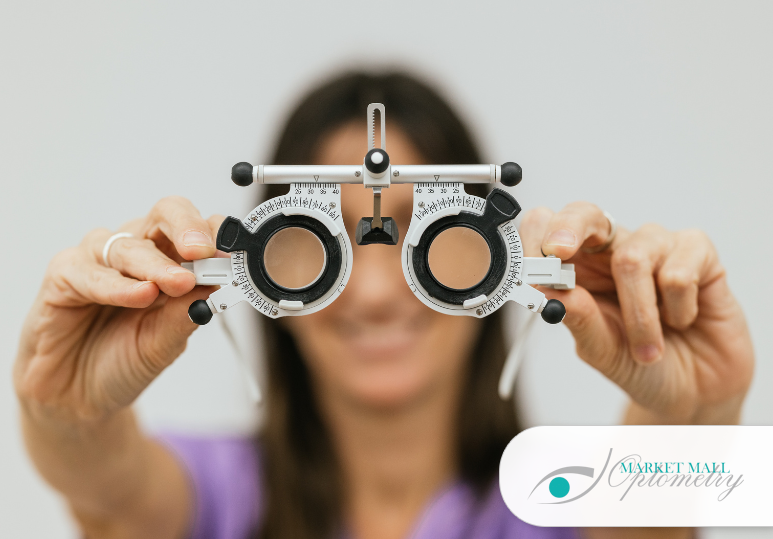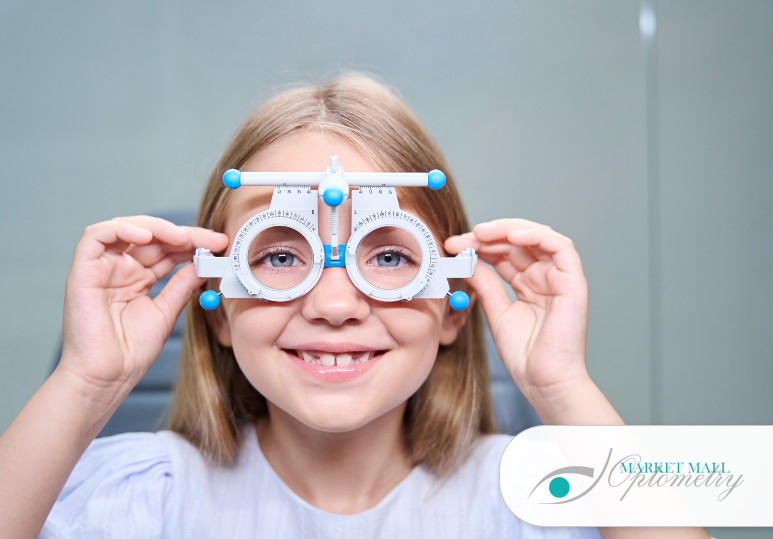How Your Eye Doctor Measures For Your Prescription
Phoropter
This device is used during a refraction test. During an eye exam, you will look through this device as multiple lenses are switched out. You will tell your eye doctor which lenses make your vision better and which make it worse. After several rounds of this, you should find a series of lenses that are the right power to correct your vision.
Autorefractor
This device automatically measures the degree of refractive error in your eye. If you’ve gone for an eye exam before, you are likely familiar with this device without knowing its purpose. This is the device that you look in that gives you an image to focus on, such as the image of a hot air balloon or a house on the horizon. The autorefractor will project an image onto your eye that will pass through the cornea, the pupil, and the lens, and will then reflect off of the retina. The light will then return through the structure of the eye and be measured by a sensor in the autorefractor. This sensor will detect the degree of distortion to measure the refraction error of the eye.
How To Read The Prescription From Your Eye Doctor
Once your eye doctor determines your prescription, it will be written down. A prescription is not always easy to read, as some specific terms and numbers need to be understood. On your prescription you should see a section that says OD; this stands for oculus dexter, a Latin term for the right eye. You will also see a section that says OS; this stands for oculus sinister, a Latin term for the left eye. You will also see an SPH, which stands for sphere and refers to the required lens power for your prescription. This lens power will be indicated with a positive (+) or negative (-) sign, with the negative meaning you are nearsighted and the positive meaning you are farsighted. There will be another section labeled CYL, which stands for the cylinder. This is used for astigmatism and the number indicated refers to the power of the lens required to correct your vision. The CYL section will be left blank if you do not have astigmatism. People with astigmatism may also have an axis number that indicates the needed angle of the lens. Finally, you may see a section called the pupillary distance, and this is a measure of how far the centre of one pupil is from another.
During an eye exam, your eye doctor will do more than measure your prescription, they will also assess the health of your eyes. Read Vision Health Month: What Your Optometrist Looks For In An Eye Exam to learn more!
Your Calgary Eye Doctor Can Help You See Clearly Again
Prescriptions can change over time, and if they are not accurately assessed vision will remain blurry. Your eye doctor can check your prescription at an eye exam to ensure you are seeing clearly and to accurately update your prescription. At Market Mall Optometry in NW Calgary, we use advanced equipment designed to measure your eye health as well as create an accurate prescription for crystal clear vision. Our highly knowledgeable staff and experienced Calgary eye doctors can help you understand your ocular health and how to continue maintaining your vision. To schedule an eye exam with the Calgary eye doctors at Market Mall Optometry, either call 1-403-286-4884 or fill out the online contact form.
FAQ
Q: How often should I visit my eye doctor?
A: Adult eye exams are recommended once every two years, once a year for those 65 and over.
Q: Are comprehensive eye exams uncomfortable?
A: A comprehensive eye exam is non-invasive so you will not feel any pain or discomfort for the duration of the exam.
Q: I’ve already had an eye exam in the past year, but something is strange about my vision. Should I see my eye doctor?
A: If you are having any vision issues, you should schedule an eye exam, even if you had one recently. Your vision and eye health can change in an instant and it is always better to err on the side of caution. Here are 5 Signs You Should Visit Your Eye Doctor. If your vision problem is an eye emergency, come to Market Mall Optometry right away to receive professional help.





